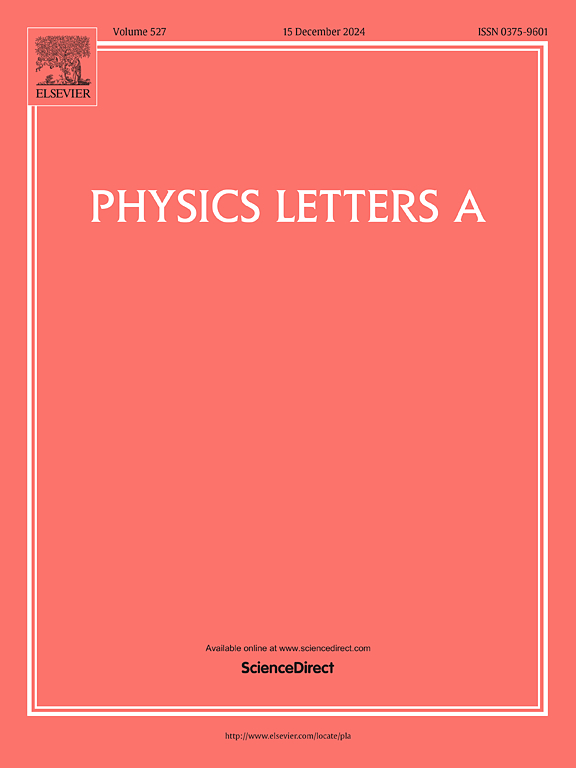复杂网络中多特征关键节点识别方案
IF 2.6
3区 物理与天体物理
Q2 PHYSICS, MULTIDISCIPLINARY
引用次数: 0
摘要
识别复杂网络中的关键节点对优化信息传播动态具有深远的影响。这项关键任务在不同领域得到广泛应用,包括流行病控制、舆论管理、交通管制和谣言传播。然而,现有的节点中心性度量存在固有的局限性,因为它们要么片面地强调局部邻域特征(如度中心性),要么片面地强调全局拓扑特性(如间中心性),从而无法全面反映节点的多尺度影响。为了解决这一关键问题,我们提出了DEGM(基于扩展度和信息熵的重力模型),这是一个将局部非直接邻居特征与全局结构信息集成在一起的新框架,用于改进重要节点的识别。首先,我们引入了基于扩展度的指标,该指标通过衰减加权聚合机制系统地融合了一阶和二阶邻域信息,从而能够更精确地量化节点的局部影响。此外,我们将信息熵理论整合到重力公式中,动态调整节点对之间的相互作用权重,有效捕获全局影响传播的异质性。对9个实际网络的深入实验评估表明,DEGM在11个最先进的基准测试中表现优异。值得注意的是,定量分析表明,DEGM在Kendall's tau系数、Jaccard相似性、单调性和互补累积分布函数(CCDF)方面表现出出色的判别能力,显著优于传统的中心性方法。本文章由计算机程序翻译,如有差异,请以英文原文为准。
A multi-feature vital node identification scheme in complex networks
Identifying vital nodes in complex networks constitutes a fundamental challenge with profound implications for optimizing information dissemination dynamics. This critical task finds extensive applications across diverse domains including epidemic containment, public opinion management, traffic regulation, and rumor dissemination. However, existing node centrality metrics face inherent limitations arising from their unilateral emphasis on either local neighborhood features (e.g., degree centrality) or global topological properties (e.g., betweenness centrality), thereby failing to reflect the multi-scale influence of nodes comprehensively. To tackle this critical gap, we propose DEGM (Extended Degree and Information Entropy-based Gravity Model), a novel framework that integrates local non-immediate neighbor characteristics with global structural information for improved vital node identification. First, we introduce the extended degree-based index, which systematically incorporates both first-order and second-order neighborhood information through a decay-weighted aggregation mechanism, thereby enabling more precise quantification of nodes' local influence. Furthermore, we integrate information entropy theory into the gravity formulation to dynamically adjust interaction weights between node pairs, effectively capturing the heterogeneity of global influence propagation. In-depth experimental assessments on nine practical networks demonstrate the superior performance of DEGM against 11 state-of-the-art benchmarks. Notably, quantitative analysis reveals that DEGM exhibits excellent discriminative capability in terms of Kendall's tau coefficient, Jaccard similarity, Monotonicity, and complementary cumulative distribution function (CCDF), significantly outperforming conventional centrality methods.
求助全文
通过发布文献求助,成功后即可免费获取论文全文。
去求助
来源期刊

Physics Letters A
物理-物理:综合
CiteScore
5.10
自引率
3.80%
发文量
493
审稿时长
30 days
期刊介绍:
Physics Letters A offers an exciting publication outlet for novel and frontier physics. It encourages the submission of new research on: condensed matter physics, theoretical physics, nonlinear science, statistical physics, mathematical and computational physics, general and cross-disciplinary physics (including foundations), atomic, molecular and cluster physics, plasma and fluid physics, optical physics, biological physics and nanoscience. No articles on High Energy and Nuclear Physics are published in Physics Letters A. The journal''s high standard and wide dissemination ensures a broad readership amongst the physics community. Rapid publication times and flexible length restrictions give Physics Letters A the edge over other journals in the field.
 求助内容:
求助内容: 应助结果提醒方式:
应助结果提醒方式:


